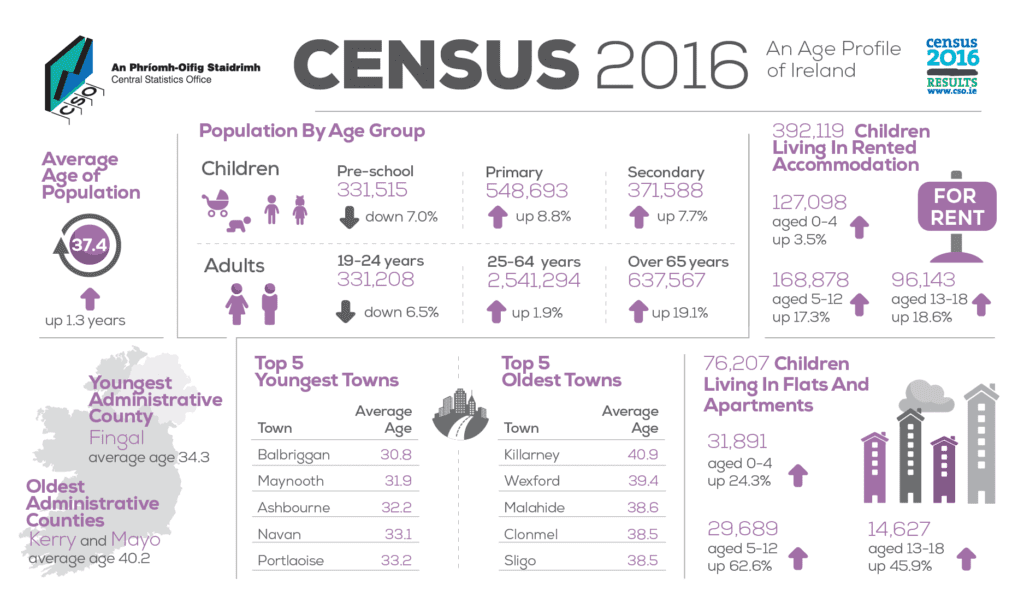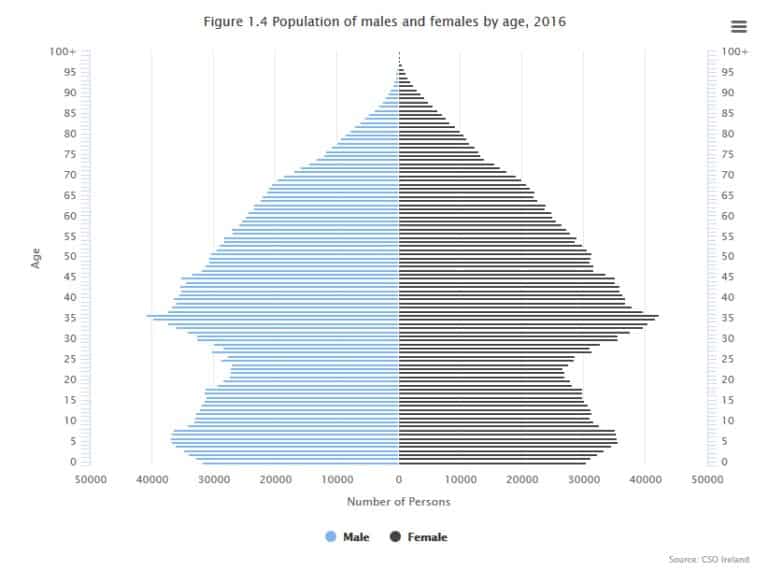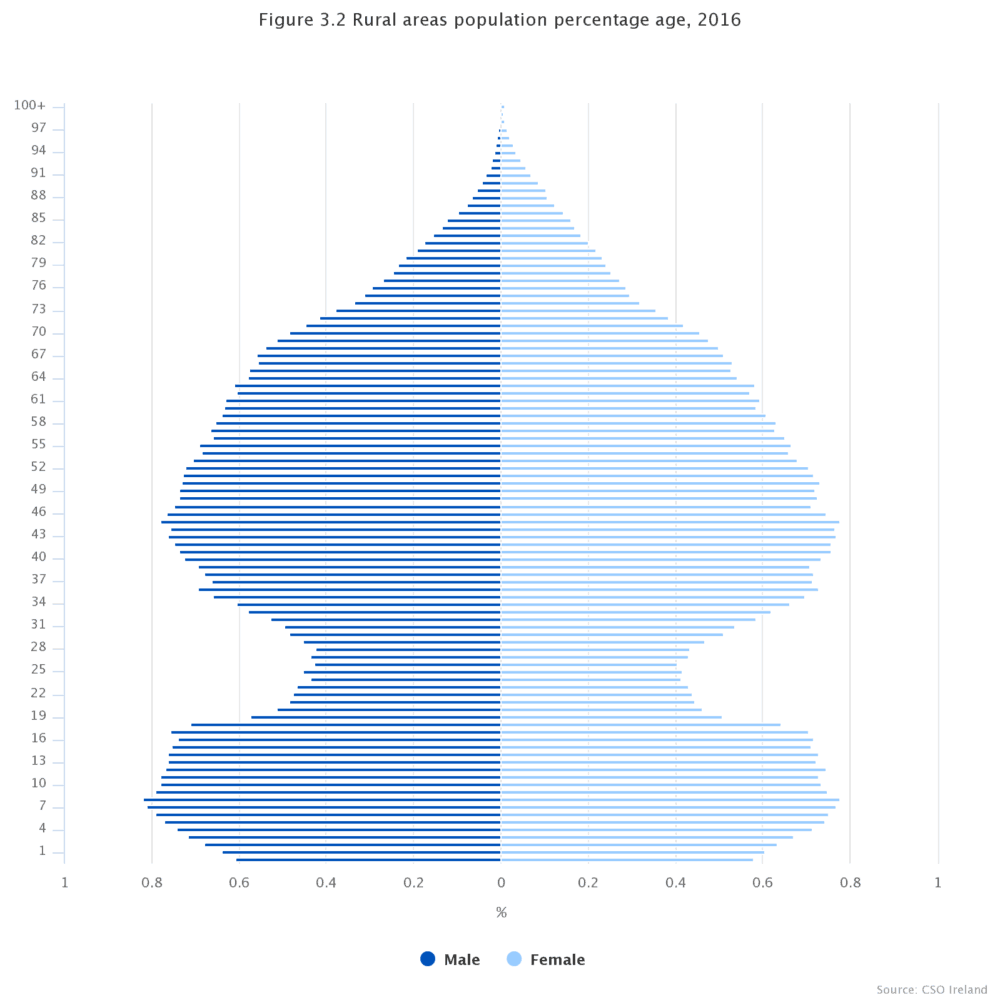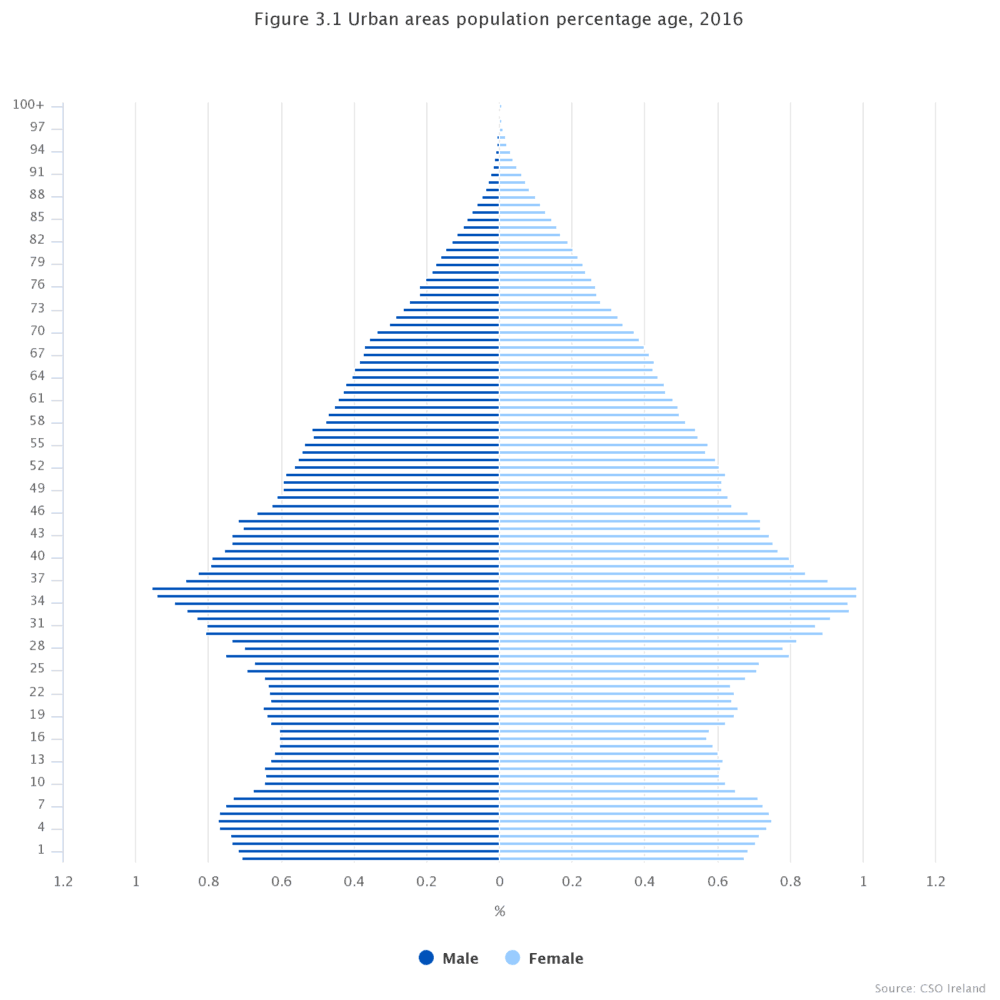Ireland’s Changing Population
- July 10, 2017


The CSO published more Census 2016 data last week, Profile 3 – An Age Profile of Ireland. At Gamma, we are eagerly awaiting the publication of all the other census data at the extremely detailed Small Area level which is due later this month. In the meantime, this publication contains a range of interesting trends and insight into Ireland’s rapidly changing demographics.
Ireland’s Population Pyramid has a wide range of policy implications.

Ireland’s population is getting older, with the average age now at 37.4. This is an increase of 1.3 years since 2011 and 3.3 years since 1996. The impact of the high birth rate of the late 1970’s and early 1980’s, along with the subsequent decline in birth rates, can be clearly seen in the population pyramid.
It is now clear that the baby boom which started around 2006 was short-lived, peaking in 2011 and declining rapidly since.
Older age groups have seen the largest increase in numbers. There are now an additional 100,000 people aged over 65 when compared to 2011, representing an increase of almost 20% in just five years.
The spatial distribution of these age groups is something which we will be analysing in detail later this month when the data is available, but there are stark differences in the age profile of urban and rural areas.


Rural areas are older, but also have a clear secondary peak among younger age groups. The ‘hollowing out’ effect of Rural to Urban migration among those aged 20-30 is particularly clear.
The general shape of the population pyramid has major implications for the provision of state services. The education sector is one clear example, it will see increased demand initially for secondary school places, and then third level places, as the bulge centred on children aged 4-8 in 2016 works its way through the education system.
As we saw in last month’s release of the Household Budget Survey, there has been a huge reduction of almost 30% in household expenditure on alcohol purchased away from home in the last 5 years. The ageing of the 70’s / 80’s cohort might have played a significant role in that reduction, as they move from their hedonistic 20’s into their more family orientated 30’s.
These shifts in demographic and expenditure patterns also have a direct impact on our high streets, as retailers adapt to changed demand. Analysing and modelling these patterns is a core capability of our Storecast™ platform, and we will be updating that with detailed demographic and expenditure data in the coming weeks.
@ 2017 Gamma.ie by Richard Cantwell
About Gamma
Gamma is a Location Intelligence (LI) solutions provider; we integrate software, data and services to help our clients reduce risk through better decision-making. Gamma was established in 1993 and was the first company to develop LI for the private sector in Ireland. The company has expanded to become a global provider of cloud-hosted LI systems, micro-marketing solutions and related services.

